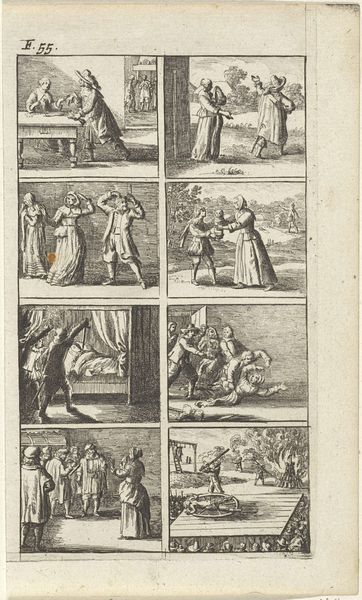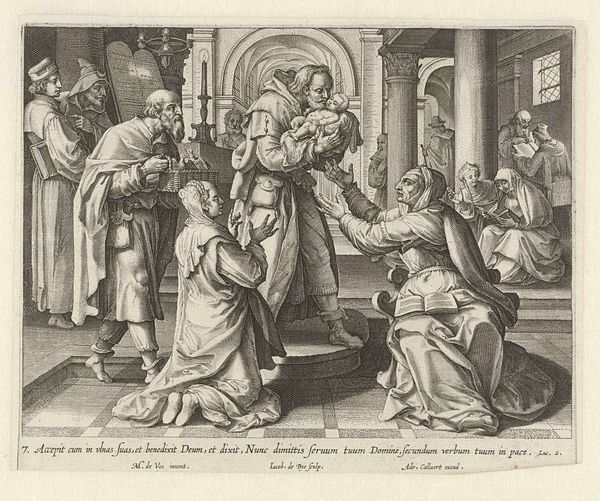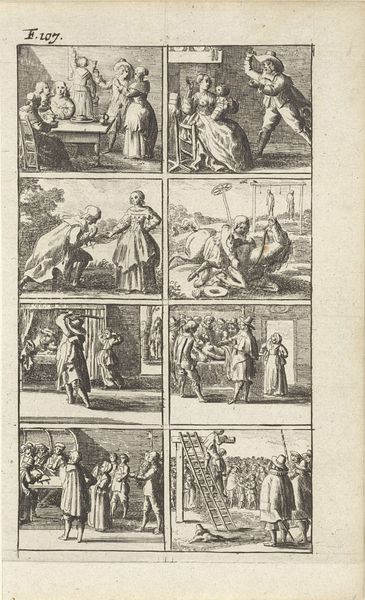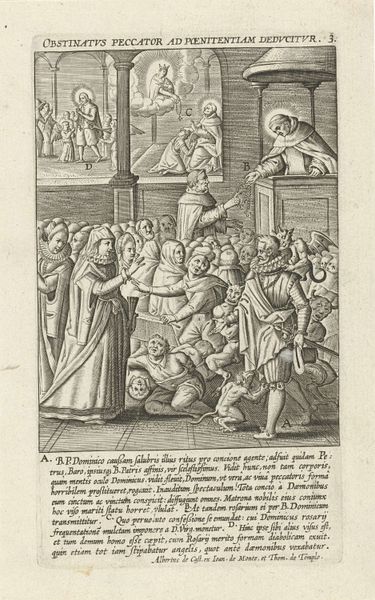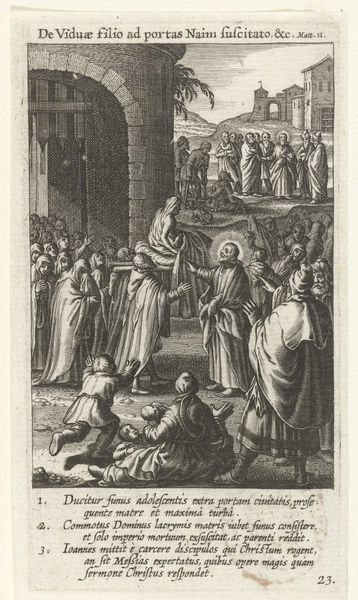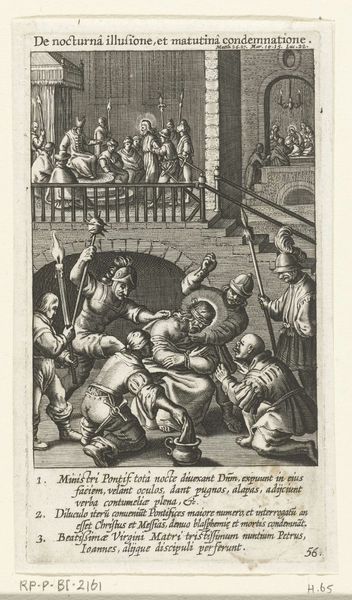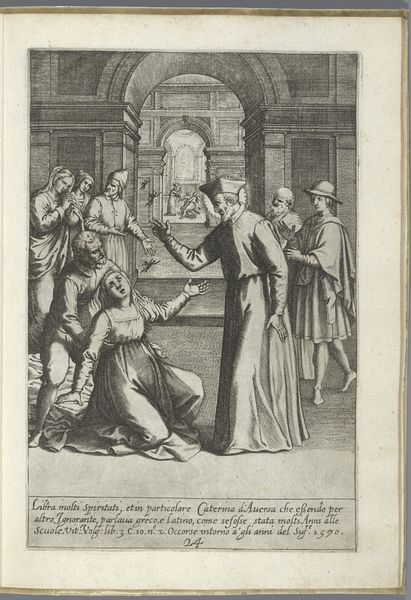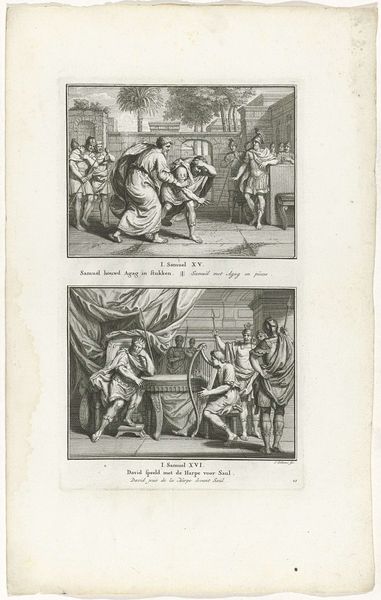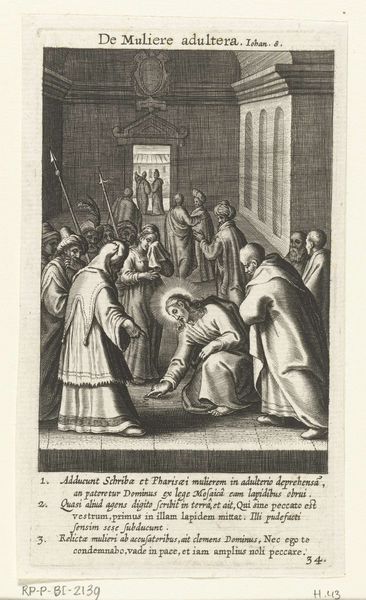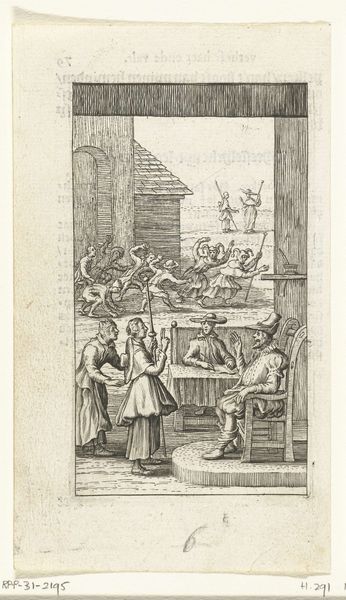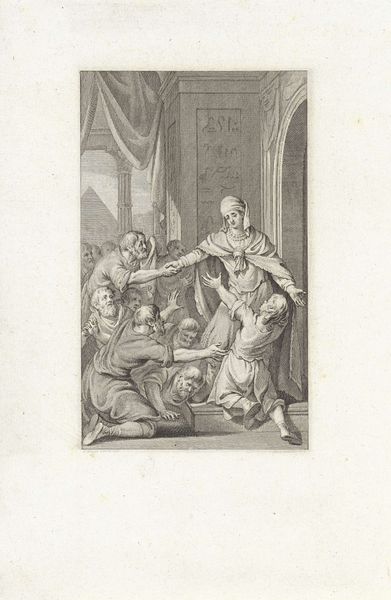
Twee voorstellingen van gewaande toverij bij een vrouw genaamd Dirkje Gerrits te Haarlem, 1617 1650 - 1699
0:00
0:00
anonymous
Rijksmuseum
print, engraving
#
narrative-art
#
baroque
#
dutch-golden-age
# print
#
figuration
#
genre-painting
#
history-painting
#
engraving
Dimensions: height 142 mm, width 89 mm
Copyright: Rijks Museum: Open Domain
Editor: This engraving, "Twee voorstellingen van gewaande toverij bij een vrouw genaamd Dirkje Gerrits te Haarlem, 1617" by an anonymous artist, dates back to between 1650 and 1699. It depicts two scenes within one frame, both filled with dramatic reactions. What stands out to you in this piece? Curator: It's a potent visual representation of social anxieties during the Dutch Golden Age. Look at the title – it highlights *gewaande* or “imagined” witchcraft. These images aren’t necessarily meant to depict actual supernatural events, but rather, anxieties surrounding women who challenged societal norms. Who holds the power in these scenarios, and who is being victimized? Editor: I see what you mean. The woman holding the baby seems to be at the center of the upper scene, and in the lower half, a man lies seemingly unconscious while women surround him. Curator: Exactly. How does the depiction of gender roles influence our understanding of the artwork’s narrative? Think about it in the context of the witch trials. Were they simply about superstition, or were they also about control, particularly the control of women's bodies and social agency? Consider too that folk healing was usually done by women who could face being branded a witch if their cures didn't work or made things worse. Editor: That's a powerful perspective. So, rather than simply seeing a depiction of "witchcraft," we should be questioning the power dynamics at play. Curator: Precisely! This piece opens a window into a complex social and political landscape. It’s not just about superstition, it’s about who society chooses to believe and why. Editor: I'll definitely look at art about "witchcraft" differently from now on. Curator: Remember, art is a product of its time, reflecting the hopes, fears, and power structures of society. It’s our job to decipher these layers.
Comments
No comments
Be the first to comment and join the conversation on the ultimate creative platform.
